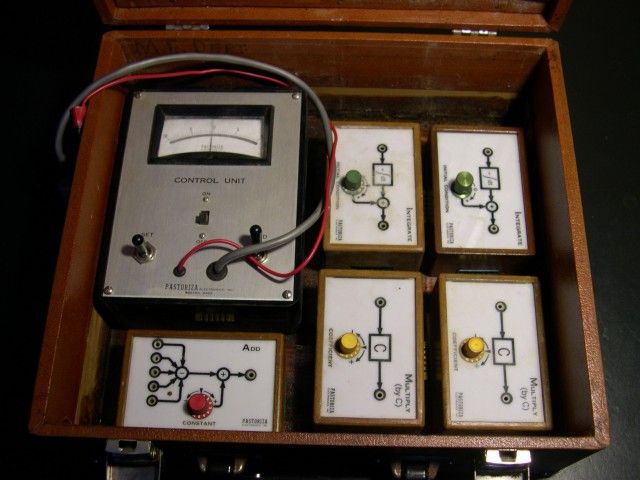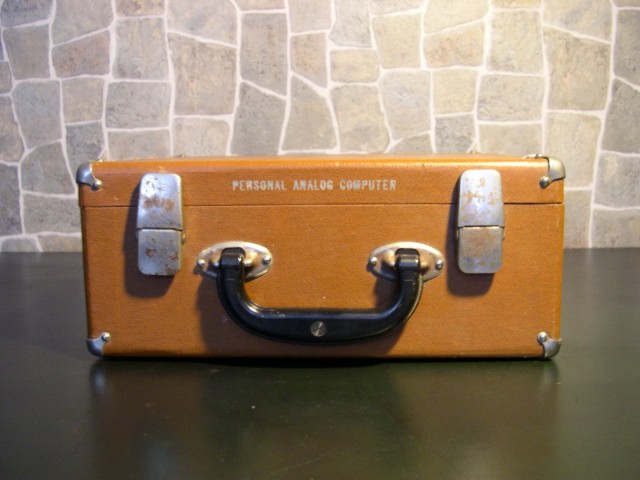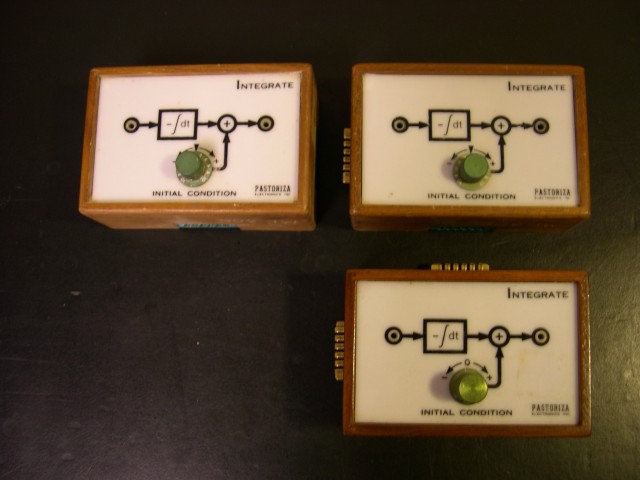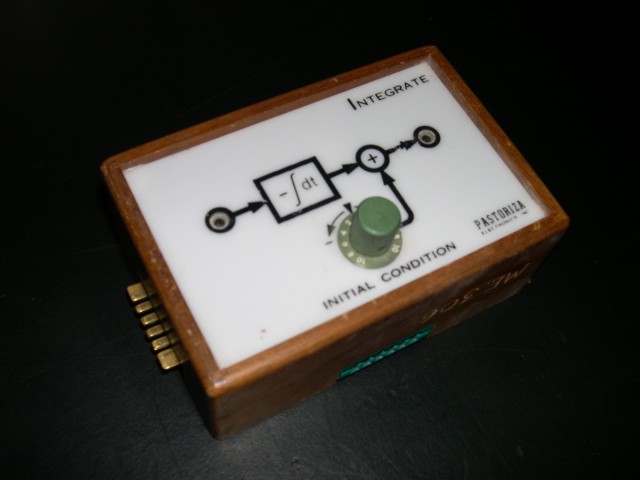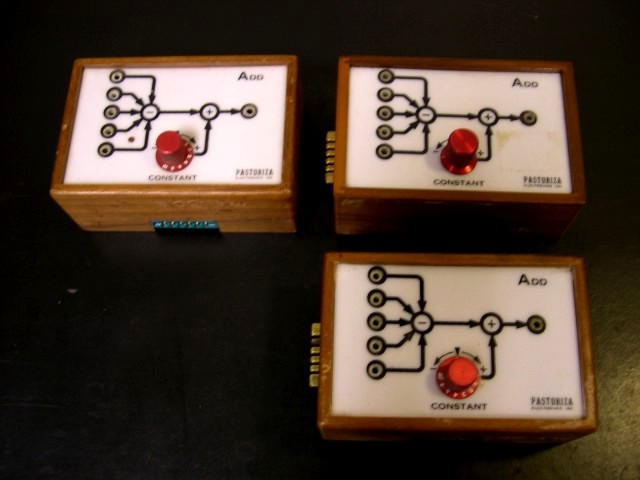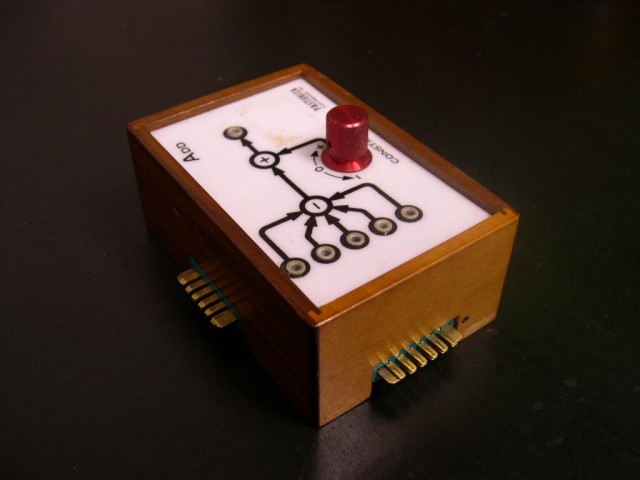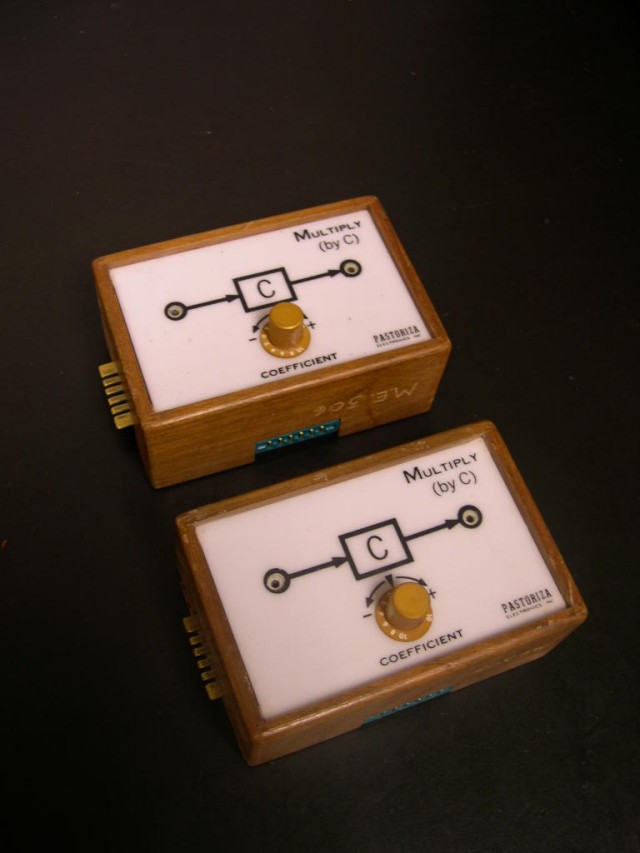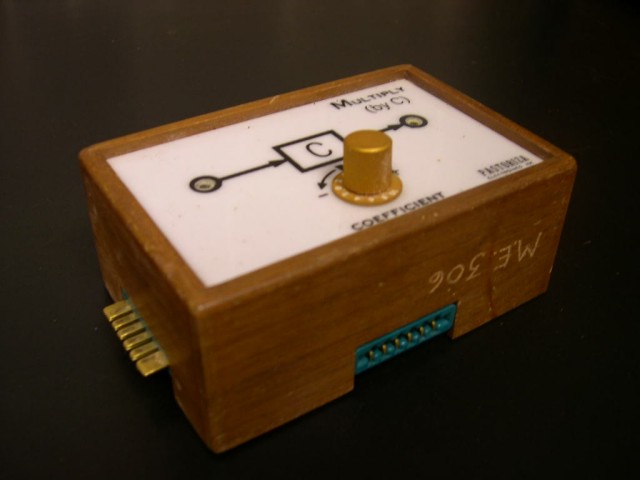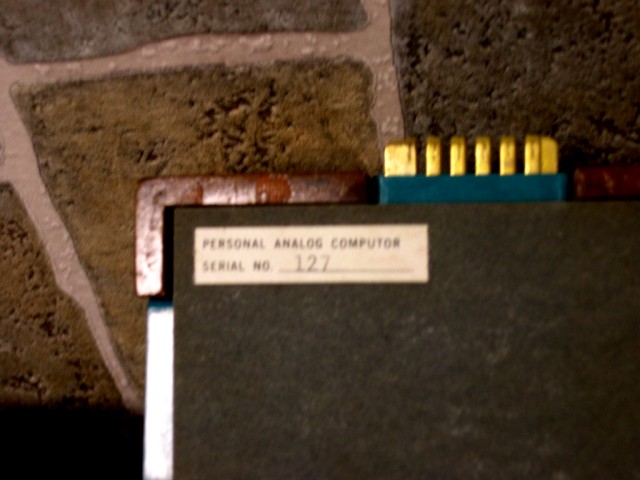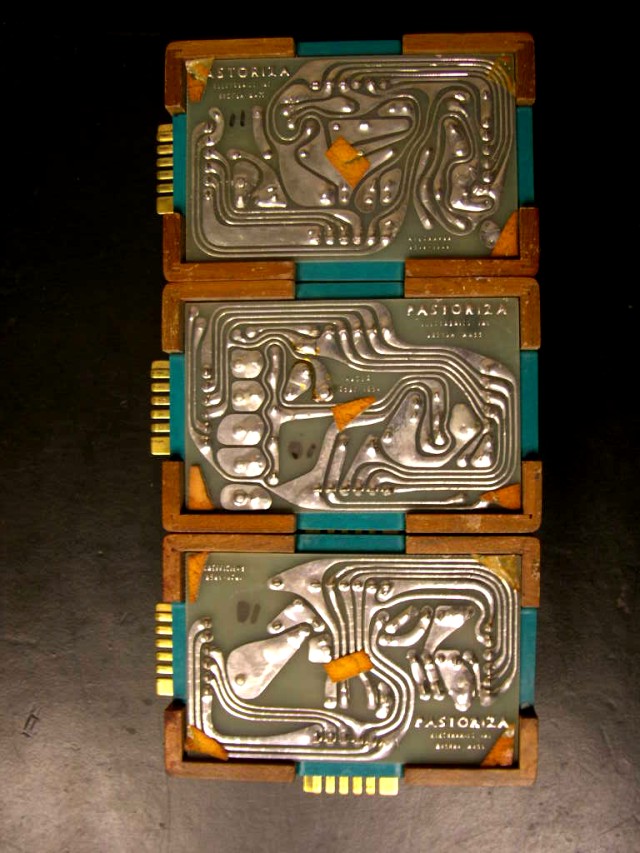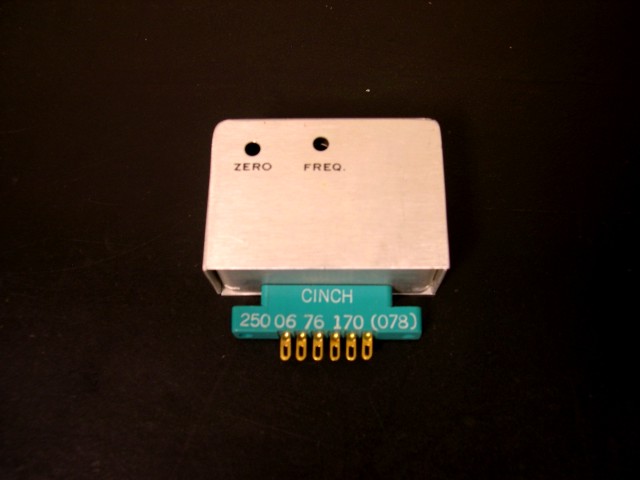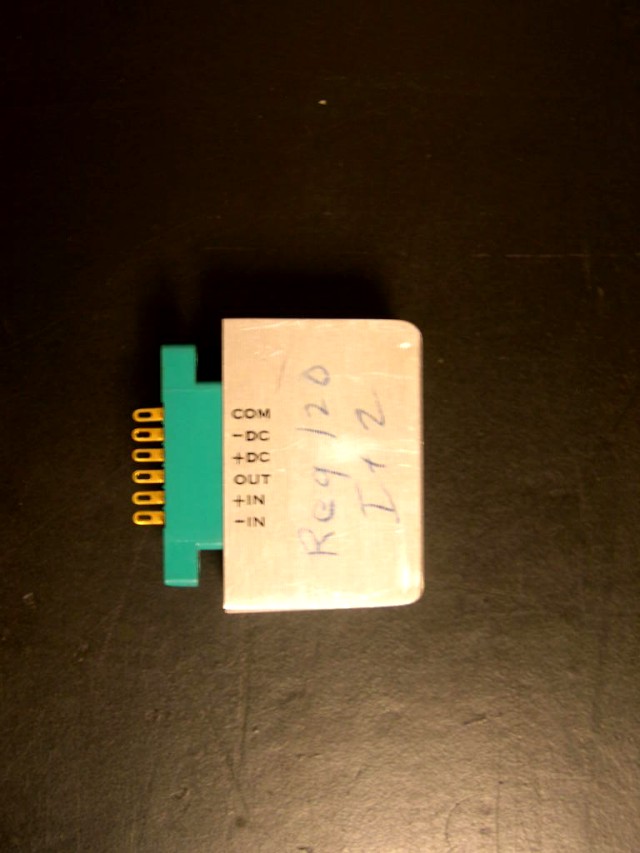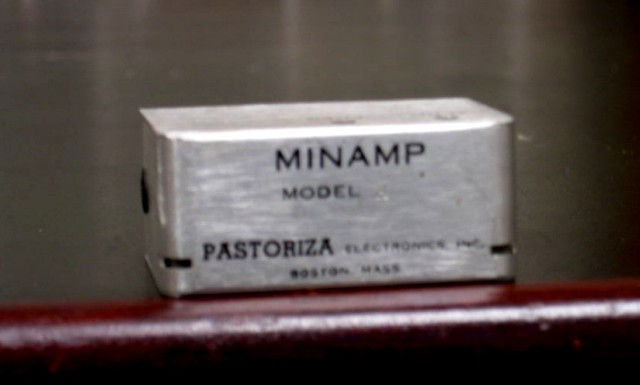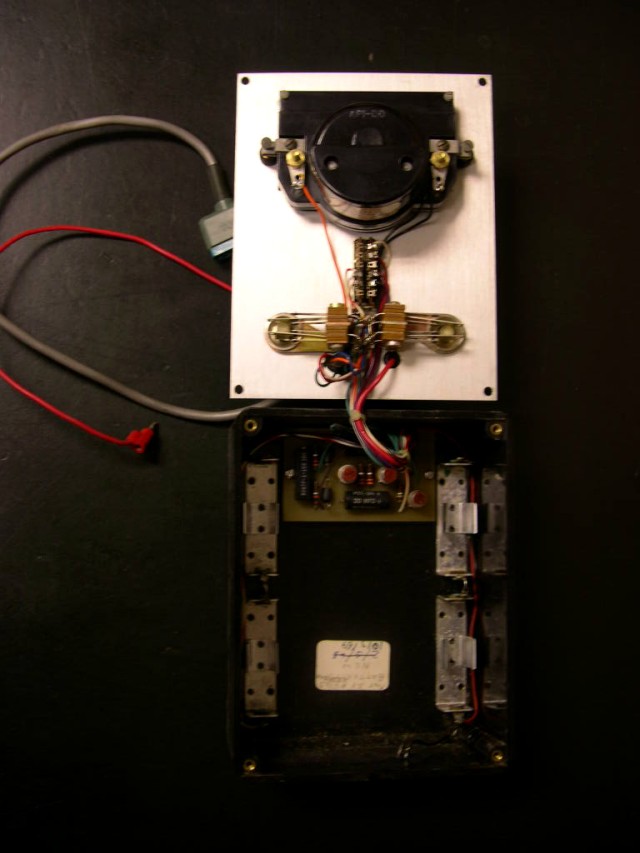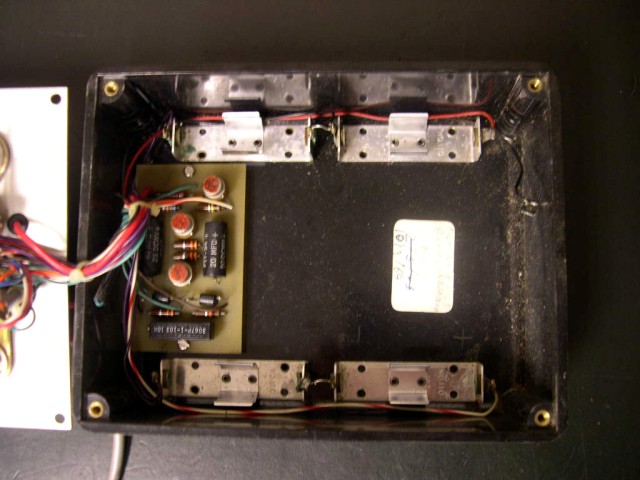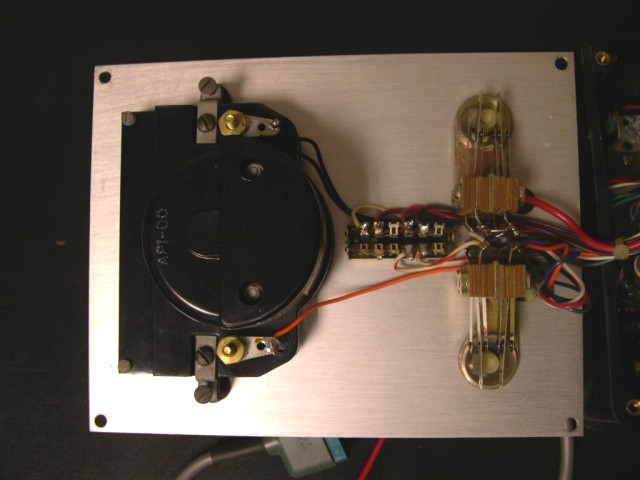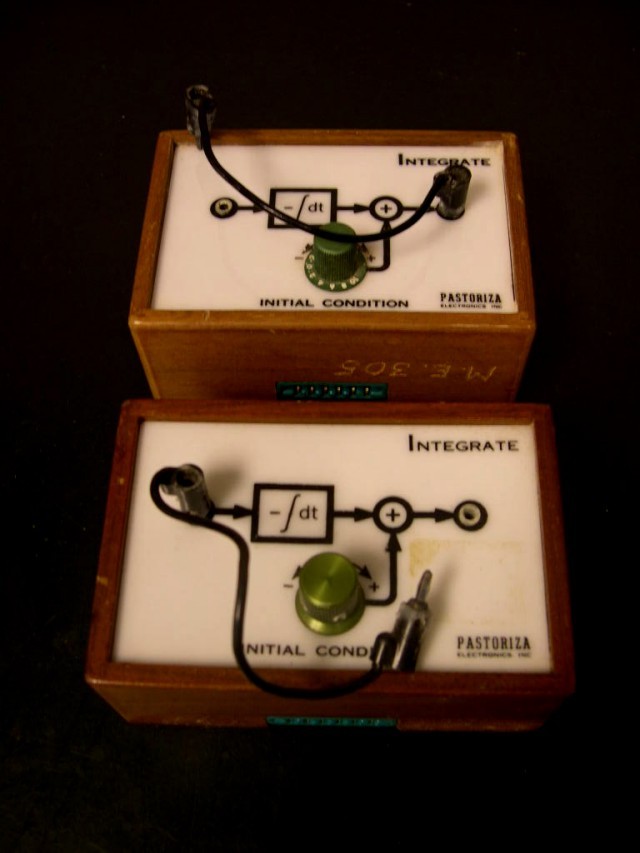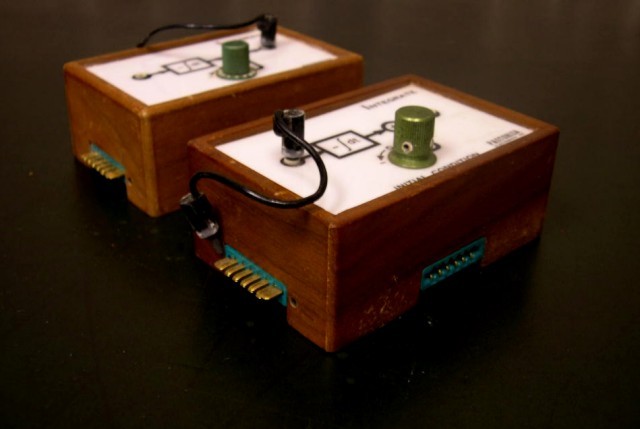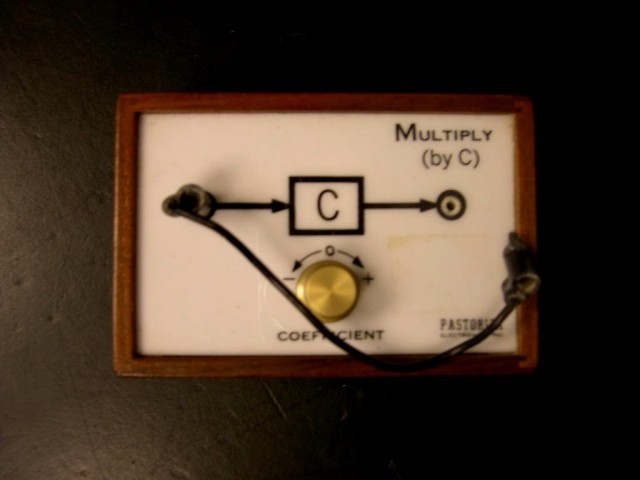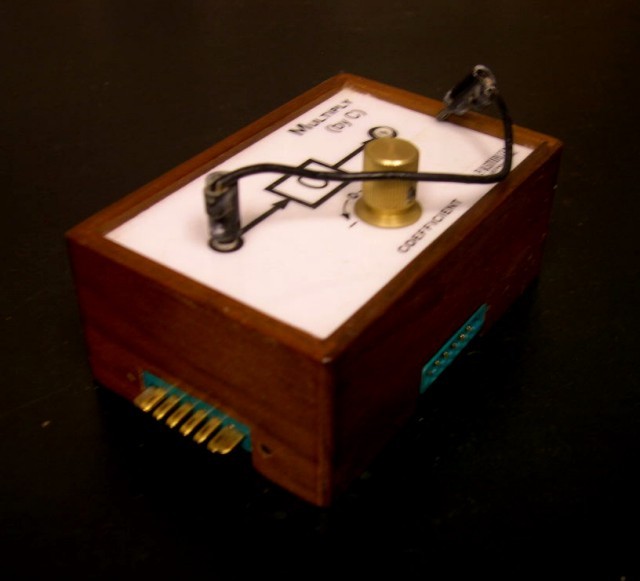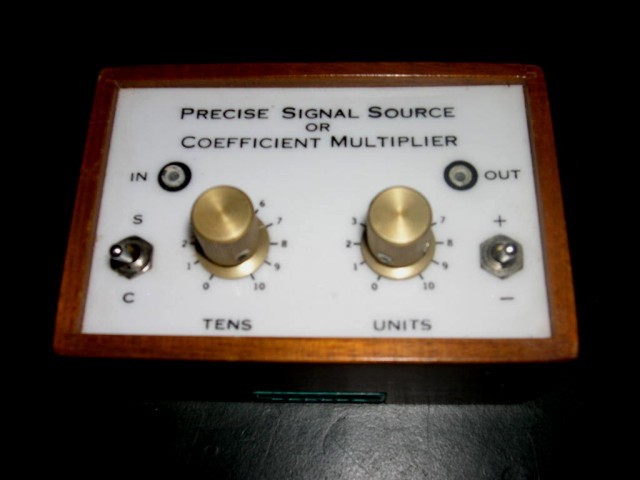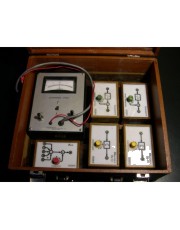
The computer was battery powered and built into a small case so that it was easily portable. They consisted of several modular units that could be configured however the student wanted. The control unit was marked on the back as serial #127. Several of the smaller units had the same number on the back and were part of that original set.
Pastoriza Research, who manufactured this computer, was bought out by Analog Devices, Inc. in 1969. Analog Devices is one of the leaders in the field of analog/digital conversion. Their website, www.analog.com, mentions the purchase of Pastoriza Research.
There is very little information on this computer. We know of only two other Pastoriza computers (see Rarity section to the left) and we are currently confirming at least one more complete unit. We are dating this computer based on the single article we have found...it may be one or two years earlier. If you have any information, please contact us.
Subject: Pastoriza Personal Analog Computer serial numbers Hi, I have three of these, of which only one is complete since there is only one Adder unit. I see serial numbers that are up to 241. So it is possible that that many were produced. I am in the process of fixing them to make them functional. Caps will need to be replaced, a different way to power them since the form factor of the batteries they used no longer is made. Contacts need to be cleaned, and more jumper wires need to be obtained. I am loosely affiliated with the Computer History Museum out here in SFBA. If they don't already have one of these I plan on donating one to them. If you know of any spare Pastoriza parts I can procure to help me make another one of these complete please let me know I may make a reproduction Adder unit if I can[t find any originals. I already have an Heathkit EC-1 which I restored to working condition, and am getting an EAI TR-20 to restore sometime this year. Hope all is well with you all. dale luck By the way, info@earlycomputers.com doesn't work!
|
Copyright © 2024 by Early Computers Project, All Rights Reserved. |

